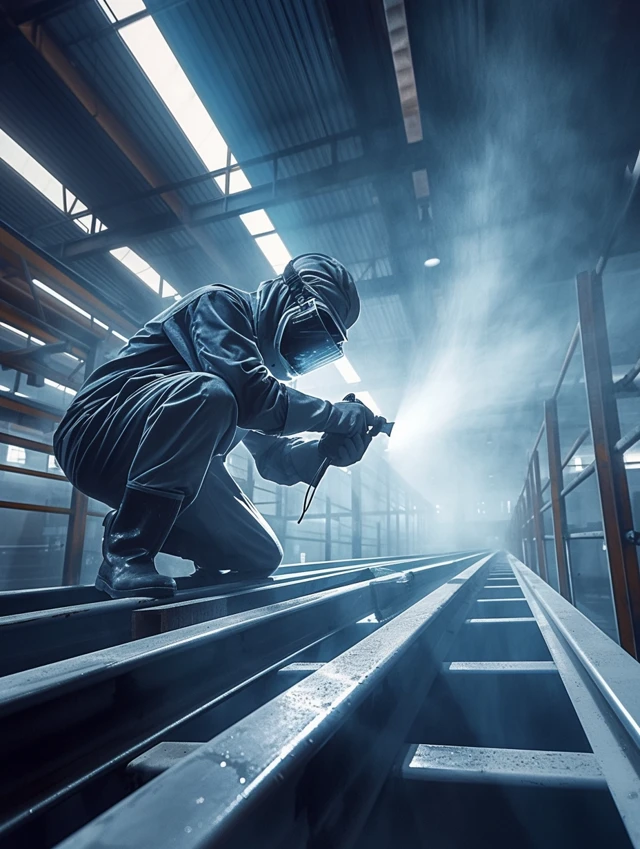Top 10 Common Mistakes When Applying Primer to Metal Structures and How to Avoid Them
- Eurolatina
- May 29, 2024
- 3 min read
Applying primer to metal structures is essential to protect against corrosion and ensure adhesion of the finishing paint. However, there are common mistakes that can compromise the effectiveness of the primer. This article will address the main mistakes when priming metal structures and provide practical tips to avoid them, ensuring maximum durability and protection.
Grip Problems
Error 1: Lack of Surface Preparation An inadequately prepared metal surface can prevent the primer from adhering correctly. Dust, grease, and rust must be removed completely before application.
How to Avoid : Use appropriate degreasers and cleaning equipment, such as sandblasting, to prepare the surface.
Mistake 2: Applying Primer to Damp Surfaces Moisture on the metal surface can interfere with the adhesion of the primer, resulting in a weak, non-durable layer.
How to Avoid : Make sure the surface is completely dry before applying primer.
Bubbles
Error 3: Applying Thick Layers Applying the primer in very thick layers can result in the formation of bubbles, compromising the integrity of the protective layer.
How to avoid : Apply the primer in thin, even layers, allowing the recommended drying time between coats.
Mistake 4: Application in High Humidity Conditions High humidity levels during application can cause blistering of the primer layer.
How to Avoid : Apply the primer in ideal weather conditions, avoiding humid or rainy days.
Inadequate Drying Time
Mistake 5: Not Respecting the Drying Time Between Coats Applying the next layer of primer or paint before the previous layer has completely dried can compromise the adhesion and effectiveness of the coating.
How to Avoid : Follow the manufacturer's instructions for drying time between coats.
Error 6: Accelerating the Drying Process Using artificial methods to accelerate drying can cause cracks or blisters in the primer layer.
How to Avoid : Allow the primer to dry naturally, following the recommended drying time.
Inadequate Surface Preparation
Error 7: Not Removing Rust Residues The presence of residual rust on the surface can compromise the adhesion of the primer and reduce its anti-corrosion effectiveness.
How to Avoid : Use proper rust removal methods, such as abrasive blasting.
Mistake 8: Ignoring the Importance of Degreasing Oil and grease residues can prevent the primer from adhering to the metal surface.
How to Avoid : Complete degreasing using specific products before applying the primer.
Primer Application
Mistake 9: Choosing the Wrong Primer for the Metal Type Using an inappropriate primer for the metal type can result in insufficient protection and adhesion problems.
How to Avoid : Select the appropriate primer for the specific metal type of the structure.
Error 10: Lack of Homogenization of the Primer Before Application Applying the primer without mixing it correctly can result in an uneven and ineffective layer.
How to Avoid : Mix the primer well before application to ensure even distribution of the components.
Eurolatina Customization and Support
At Eurolatina, we manufacture customized synthetic primers to meet the specific needs of each client. Our experts offer complete support, from selecting the most suitable product to technical consultancy during application. This guarantees maximum protection and durability for your metal structures.
Frequently Asked Questions (FAQ)
1. What is a synthetic primer?
A synthetic primer is a preparation layer applied to metal surfaces to protect against corrosion and improve the adhesion of the finish paint.
2. How to correctly prepare the metal surface before applying the primer?
Clean the surface removing all dust, grease and rust. Use degreasers and cleaning equipment, such as sandblasting, to ensure proper preparation.
3. How important is it to apply the primer in thin layers?
Applying the primer in thin layers prevents the formation of bubbles and ensures uniform and adequate drying, resulting in a more effective layer of protection.
4. Can I apply primer in any weather condition?
No, the application must be carried out in ideal climatic conditions, avoiding high humidity and extreme temperatures that could compromise the adhesion and drying of the primer.
5. How do I choose the right primer for the type of metal in my structure?
Consult experts and check the manufacturer's specifications to select the appropriate primer for the type of metal and environmental conditions of the application.
Conclusion
Avoiding common mistakes when applying primer to metal structures is crucial to ensuring the effectiveness and durability of the coating. Proper surface preparation, correct application and use of the appropriate primer are fundamental steps. At Eurolatina, we offer customized products and specialized technical support to meet the needs of each client, ensuring maximum protection for their metal structures.






Comments